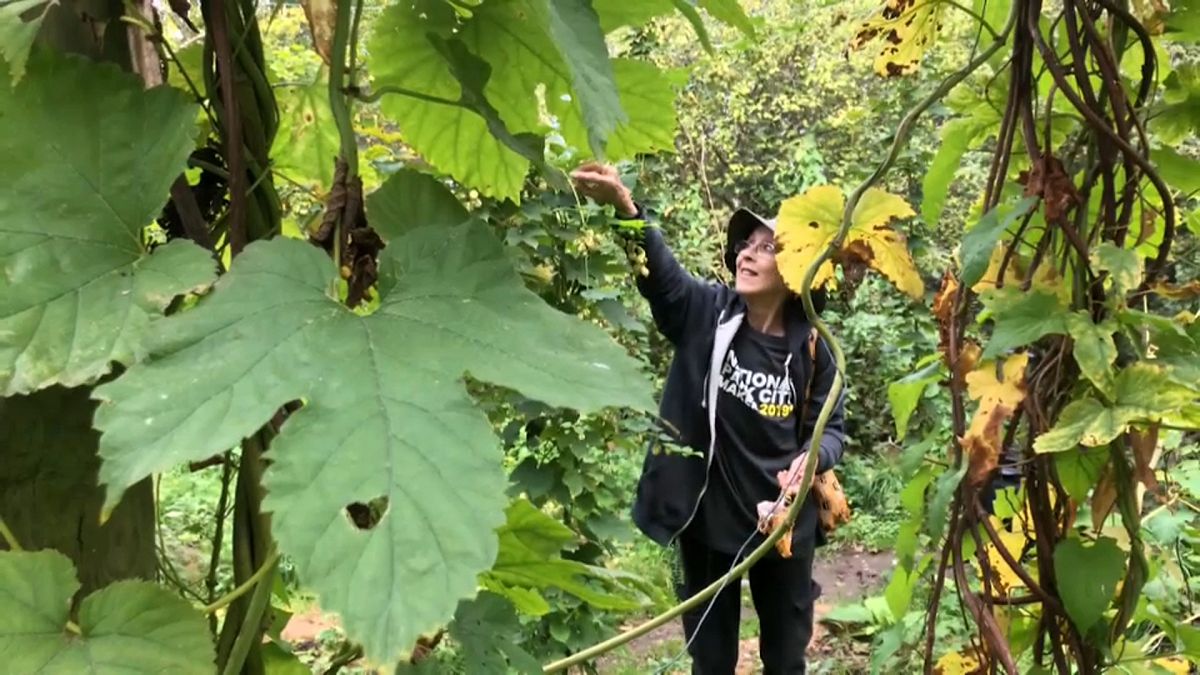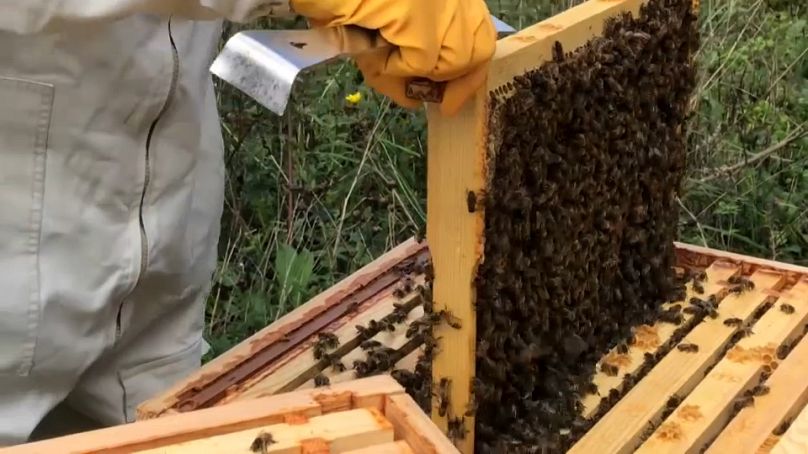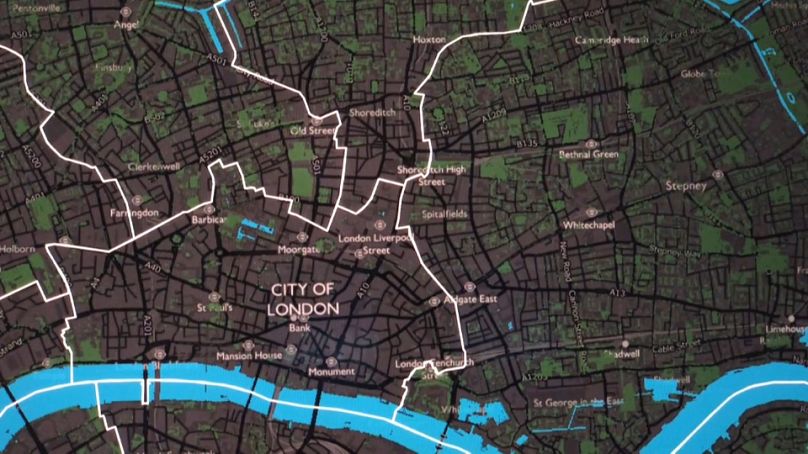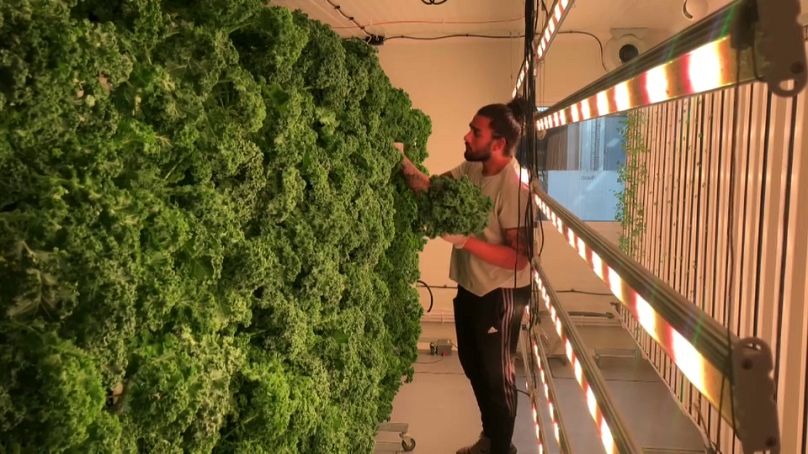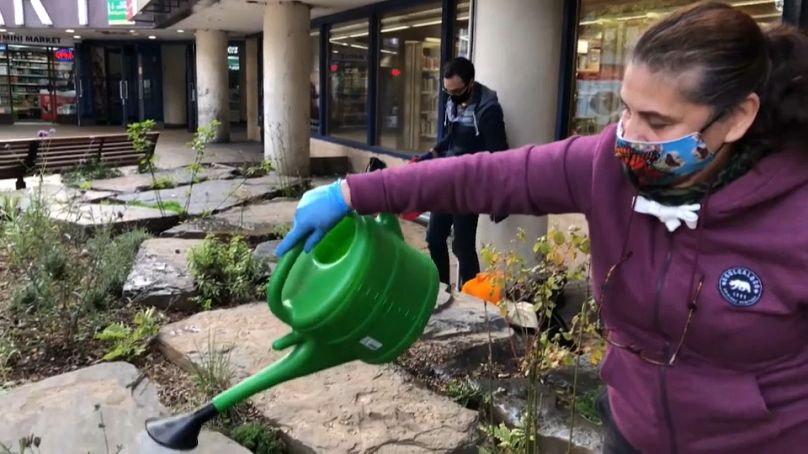In 2019, London signed a pledge to become the first National Park City as part of a new drive to convince cities and their residents to be greener, healthier, and wilder. But how will it fulfill its ambitious target to turn 50% of its urban spaces green by 2050?
London is one of Europe’s most polluted cities. But it has set itself an ambitious target: to make half its urban area green by 2050. As part of Euronews' Green Tomorrow week, we've been investigating how it plans to achieve this.
The Mayor of London's office has pledged €12 million to create green spaces and encourage environmentally friendly developments.
Becoming the world’s first National Park City last year, London signed a pledge to be greener and wilder - meaning the pressure is on to push forward and maintain dozens of green projects.
Just below the urban skyline of the Canary Wharf financial district, there's a thriving eco-park named Stave Hill; it's one of more than 50 such projects helping to green the grey of the concrete jungle in England's capital.
Here, in the shadow of the skyscrapers, there are orchards, hop gardens and bee hives.
Lesley Wertheimer is one of London’s 54 Park City Rangers. She works at Stave Hill.
Lesley says green spaces can benefit everyone:
"We're working on green prescriptions, where we found that people who are unwell, mentally and/or physically, or both, benefit from being in an area like this, whether it's just wandering through or whether it's contributing to doing something to improve it."
Despite high levels of pollution, London is already 47.5% green, but to reach the 50% target, highly-developed areas must improve.
Shirley Rodrigues, Deputy Mayor for Environment and Energy, says all new developments have to bear this in mind:
"They have to incorporate an element of green roofs, green infrastructure, that will support bio-diversity.
"We have more green roofs in London than in any other city in Europe and that is brilliant for fostering wildlife in the heart of the city."
On a rooftop in Paddington, central London, an urban farm has sprouted. It's one of the projects of Square Mile Farms, an urban farming business:
Here, vegetables grow without the need for soil - and these living walls can be installed in offices and tower blocks around the capital.
Dhiresh Tailor, Farm Operations Manager with Square Mile Farms says it's about using the available places:
"We realised there's a lot of under-utilised spaces in London, which are simply just under-utilised concrete.
"We want to bring in not only green - so, bringing the outside in - but bring in edible plants, so that people can engage with them and learn how to grow food in residential complexes and offices."
As well as indoor projects such as Square Mile Farms' Paddington one, London’s exterior living walls are another way of greening the grey; by attracting wildlife and helping to regulate the building’s temperature.
Elsewhere, in a busy part of North London, volunteers are planting a garden in the heart of Haringey:
Luke Newcombe, a London Park City Ranger involved in the project says it's made a big difference:
"Prior to the gardens being here, it used to be a bit of a hangout for drunks.
Since the fences have come down, it's opened up. It feels like a new sense of pride in the area."
And as London’s urban development expands, the environment that supports it must not be forgotten.
